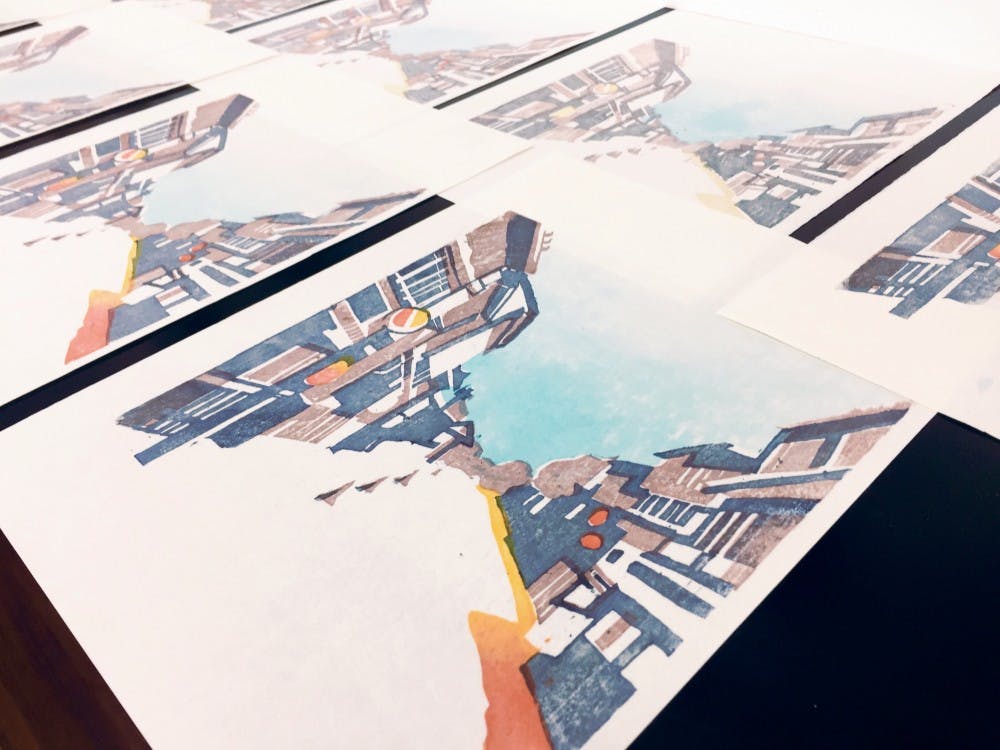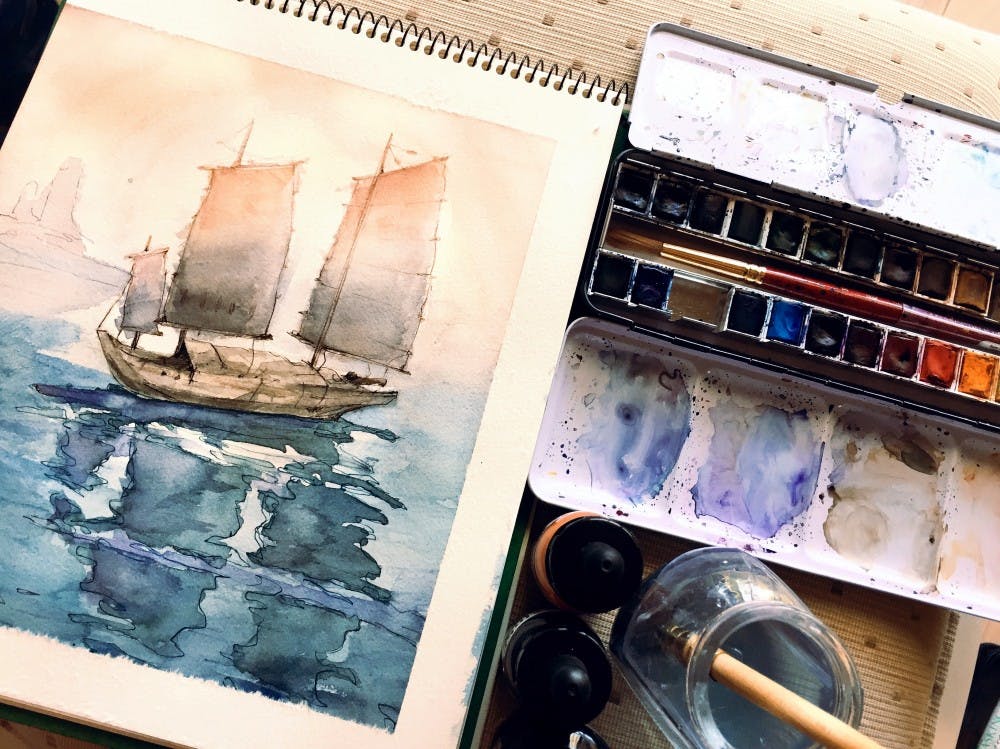When I hear the words “American art,” I see a mental image of Thomas Cole’s The Oxbow; when I hear “European arts,” I see da Vinci’s Virgin of the Rocks; when I hear “Japanese art,” I see Hokusai’s The Great Wave. Clearly, where art derives from determines its character. In the same way, where Penn students go abroad for art shapes their individual creative processes.
For Teresa Zhao (C ’20), her artistic styles have been shaped by her time spent in Japan the summer after her freshman year. Enrolled in the International Christian University in Tokyo, she studied at an art studio where she first came into contact with woodblock printing. The thing about woodblock print is that it tends to feature broad areas of flat color with a limited amount of modulation or gradation rather than to spotlight the contrast between colors for a three–dimensional effect. Because of this, Teresa’s way of applying colors has changed in tandem: as she describes it, “When I paint I limit my palette subconsciously, but it’s not necessarily a bad thing since it could be a unique style.”

In the same way, because woodblock print requires immense amounts of planning before the actual act of creation, Teresa also became more “systematic and organized” when she paints. In describing how this change has affected her, she says, “it comes down to the question of to what degree I need to employ that approach into painting. Most times I let it flow, but occasionally I also ask myself if woodblock printing technique guides me too much.”
At the other end of the spectrum is Jolie Gittleman’s (C ‘19) experience. She spent her last semester at the Slade School of Fine Art, the art school of University College London. Whereas Teresa grew more meticulous in her art, Jolie characterizes her experience as more free and independent.
Though, this is due in part to the differences in education system. Unlike Penn’s fine arts curriculum which is organized through classes that usually happen six hours a week, Slade’s whole undergraduate curriculum is more like “a senior thesis” where students freely expand their own ideas and create their portfolio. There are no detailed, specific requirements that students have to follow. Critiques focus on asking questions such as “whether the artist feels confident and what emotions he or she conveys” rather than those like “how a piece uses contrast and color and meets the rules whereas the other asks.” Here, it’s a matter of making your own rules as opposed to following set ones.
Because of this, Jolie says, “For the first time, I got to develop my own aesthetic. At the Slade nobody was doing stuff from observations like still lifes or something. Their works were abstract and expressive and they are more comfortable with art being about just the process of making rather than bearing a message.”
The geographic influences on Penn students is, of course, not bound to Penn students. It’s the same in history. In the mid–18th century, the excavations at Herculaneum and Pompeii sparked the Grand Tour and in turn the revival of interest in Greece and Rome and the artistic movement known as Neoclassicism. Visiting a foreign place lent special insights to the act of depicting. Artists became acutely attuned to the physical, cultural, and emotional nuances of place, and their potent responses were channelled directly into the paintings, informing not only the subjects but also the style, substance, and even at times the technique.
Nevertheless, that’s the power of traveling. It informs, it teaches, and it shapes. And for these art students and any others who have gone abroad, such as Belle Carlson, who was an artist–in–residence, it’s done wonders in transforming their art to be what it is today.

